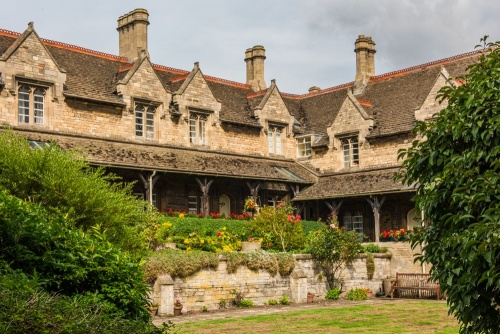
Browne's Hospital is a historic 15th-century almshouse in the heart of Stamford, established by a wealthy wool merchant. The man responsible was William Browne, who lived with his wife Margaret in a house adjoining the western side of the almshouses. Look for the statue of William Browne over the entrance door.
History
William and his brother John Browne are credited with rebuilding nearby All Saints Church after it suffered at the hands of Lancastrian soldiers in 1471.
Four years later in 1475 William Browne founded an almshouse known as Browne's Hospital, or Browne's Bedehouse. A decade later in 1485, Browne received letters patent from the Crown to found and endow the Hospital. When Margaret Browne died in 1489 administration of the Hospital passed to her brother Thomas Stokke, Canon of York and the Rector of Easton-on-the-Hill. Stokke would have known the Priest's House in Easton-on-the-Hill, a medieval residence now cared for by the National Trust.
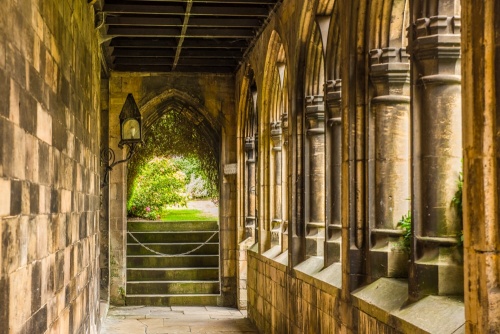
Stokke applied for new letters patent from Henry VII in 1493. The Hospital chapel was officially consecrated by the Bishop of Lincoln in 1494.
The hospital provided a home for 10 poor men and two women, led by a Warden and a Confrater. The Warden and Confrater were secular priests (i.e. they were not part of a monastic order). Residents did not have to come from Stamford; they were often drawn from the surrounding area most often from parishes where the Hospital held property. When they became too old to work their parish priest would recommend them to Browne's Hospital.
The Hospital was meant to be not just a place to live but a place to pray. Residents were required to attend Mass twice daily, except on Sundays when they had to attend All Saints Church.
The Browne family had strong links to All Saints Church; not only were they responsible for rebuilding it after it was damaged in the Wars of the Roses, but they were also buried there, as were their parents. The Browne family memorial brasses are one of the major historical attractions in All Saints Church today.
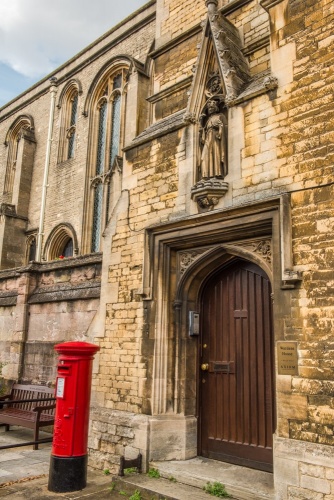
Compulsory attendance at Mass was in effect until the 1950s. From the middle of the Victorian period until the 1950s the male residents were required to wear a uniform so that they could readily be identified. An example of this uniform is on display in the Ante-Room exhibition.
A new charter was issued by James I in 1610, making Browne's Hospital officially a Royal Hospital. The Hospital is still home to 12 men and women, though the exact proportion of male and female have changed over the centuries. As of this writing, there are 10 women and two men resident.
Browne's Hospital acted as 'Middlemarch Hospital' in the film adaptation of George Elliot's classic novel 'Middlemarch', which was filmed in Stamford.
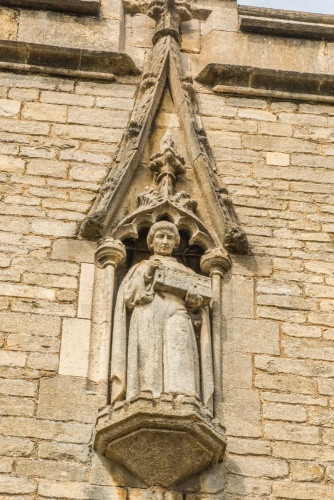
What to See
Common Room
Immediately to the right of the Hospital entrance is the large Common Room, which was divided into cubicles for the 10 male residents. Each man had access to a window and his cubicle was marked by dark wooden strips in the floor. The two female residents had a separate room. The Common Room was divided from the Chantry Chapel by a 1475 carved screen so that men who were too sick to attend worship could still see into the Chapel.
By 1870 the medieval concept of 10 men in the same room gave way to Victorian ideas of improved living conditions. Architect James Fowler was called in to create separate cottages grouped around the Hospital cloister. Fowler also built a separate Warden's House outside the eastern wall of the Chapel. With the residents now occupying separate cottages, the Common Room was turned into a Board Room.
The Staircase
As you go through the entrance you will see a striking curved stone stair leading up to your right towards the Audit Room. At the base of the stair is a brass plaque bearing the Browne coat of arms and a rhyming inscription on Latin commemorating the Hospital's foundation. At the top of the stairs is the Ante-Room where you can see a small exhibition on the history of Browne's Hospital.
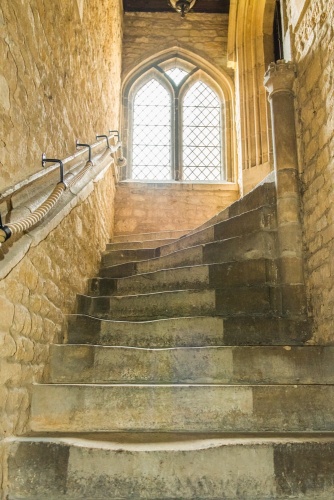
The Chapel
Holy Communion is still held here every week and members of the public are welcome. Look for a set of original 15th-century misericords and a stained glass window with richly coloured 15th-century glass panels. The heavy stone altar is original. It was hidden in the floor paving during the religious turmoil of the Reformation and only rediscovered in 1925. Another original feature is a late-medieval cope chair, made so that a priest could sit without creasing his vestment.
The Audit Room
The Hospital's business is transacted here. The centrepiece of the audit Room is an oak table made in 1583. It bears the initials PR for Peter Routh, the Warden at that time. The stained glass windows are 15th century. Look for the large iron-bound chest used to store important documents such as the foundation charter. The chest was given by Thomas Stokke. It has three locks, and the keys for each lock were held by the Warden, the Vicar of All Saints Church, and one of the men. All three had to be present in order to open the chest.
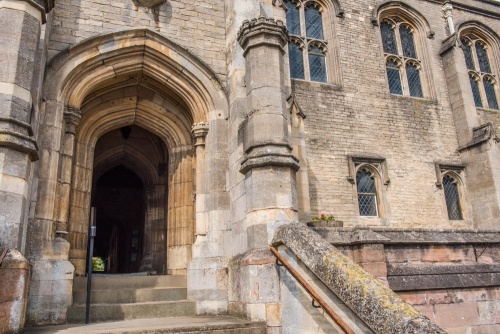
The final chamber is the Confrater's Room, boasting more original medieval furniture. When the Hospital was reordered in 1870 the Confrater was no longer required to be resident but the chamber was retained as a sitting room. There are medieval stained glass panels in a lightbox.
The Hospital is open for pre-booked group tours, on specific Bank Holidays and during the annual Heritage Open Days in September. On our last visit, we were only able to access the entrance corridor, which gives wonderful views of the Hospital cloister and the resident's cottages.
Browne's Hospital is extremely easy to find. It is on Broad Street in the town centre, between All Saints Street and Newgates.
About Browne's Hospital
Address: Broad Street,
Stamford,
Lincolnshire,
England
Attraction Type: Historic Building
Location: At the junction of Crown Street and Broad Street
Website: Browne's Hospital
Location map
OS: TF029072
Photo Credit: David Ross and Britain Express
HERITAGE
 We've 'tagged' this attraction information to help you find related historic attractions and learn more about major time periods mentioned.
We've 'tagged' this attraction information to help you find related historic attractions and learn more about major time periods mentioned.
Find other attractions tagged with:
NEARBY HISTORIC ATTRACTIONS
Heritage Rated from 1- 5 (low to exceptional) on historic interest
Stamford, All Saints Church - 0.1 miles (Historic Church) ![]()
Stamford, St John's Church - 0.1 miles (Historic Church) ![]()
Stamford, St Mary's Church - 0.1 miles (Historic Church) ![]()
Stamford Castle - 0.2 miles (Castle) ![]()
Stamford, St Martin's Church - 0.3 miles (Historic Church) ![]()
Burghley House - 1.3 miles (Historic House) ![]()
Priest's House - 2.1 miles (Historic Building) ![]()
Tickencote, St Peter's Church - 2.8 miles (Historic Church) ![]()



